Opus 89, 2010
Interior Construction Photos
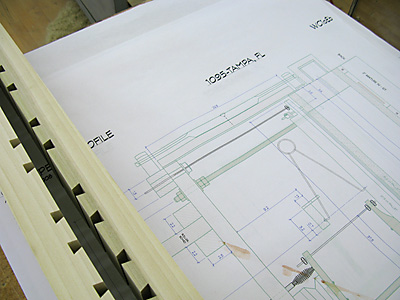
The pipes and the windchests are the first parts of the organ to be built. Since they are used for layout purposes, the windchest drawings are printed on what is essentially plastic, a matte-finish polyester film. This material isn't affected by humidity, while paper can easily shrink or expand 1/4" over the length of a large windchest.

Slider windchests are built around a “grid”, a framework that creates individual channels for each note. These two rails will be the long sides of the grid, and have dovetail grooves to receive the “channel bars”, the dividers between each note channel.

The channel bars have dovetail ends that match the grooves in the grid frame rails.

The assembled grid.
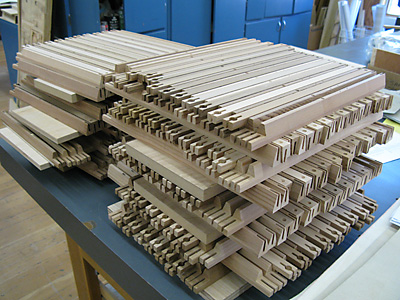
Stacks of windchest valves, or “pallets”, waiting to be leathered.
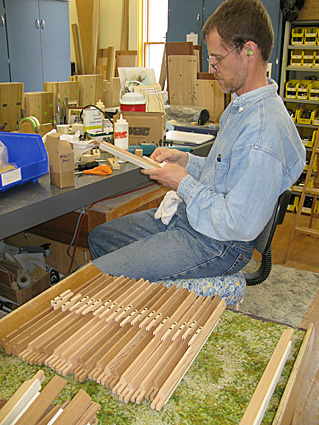
The bass pallets have a small wooden part that is connected to the “balancier”, a small device that helps reduce the “pluck”, or initial resistance felt at the key.
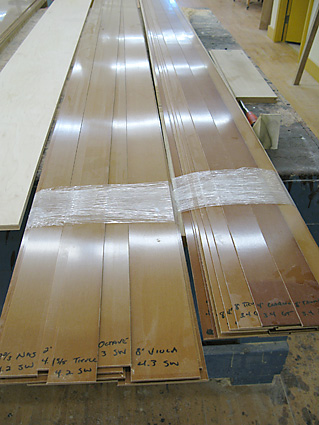
Sliders cut to width. This material is composed of cotton sheets impregnated with a phenolic resin, and are highly resistant to climatic changes. Like the organ, it’s made in Iowa by Norplex-Micarta.
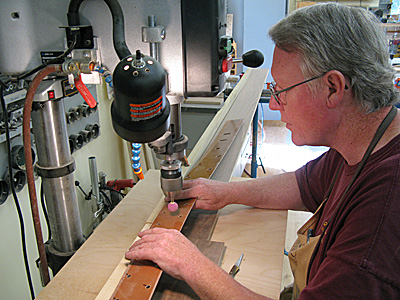
Pat deburrs the holes in a slider.
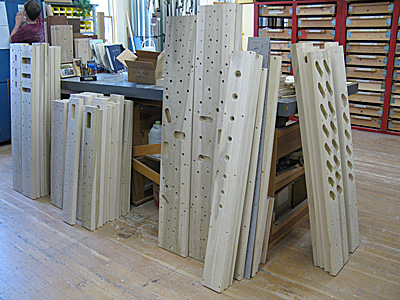
Windchest toebards. A pipe stands above every hole. The larger routed cavities in the toeboards on the right will house check valves that allow single sets of pipes to be played from both the Great and the Pedal divisions.
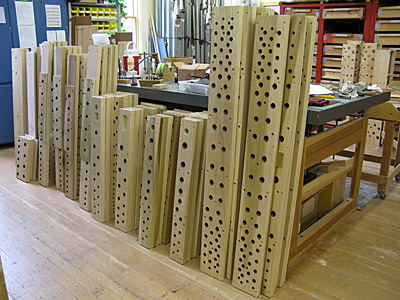
Windchest toebards, now with burned (countersunk) toeholes and lacquered.
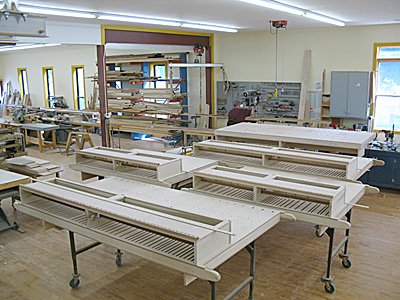
A bevy of windchests, placed upside down on carts. Pallet boxes are being fitted.
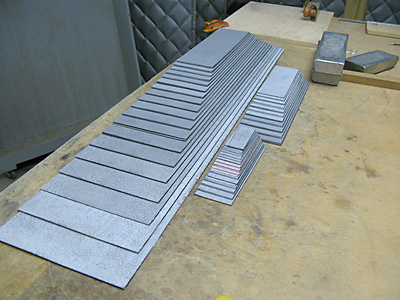
Pedal Mixture pipe bodies before they are rounded.
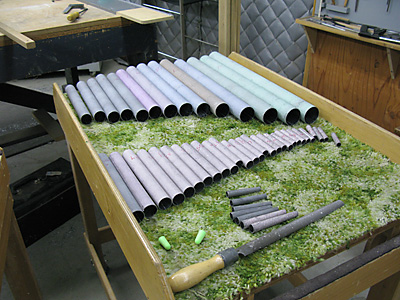
Choir Lieblich Gedeckt bodies after rounding & soldering.
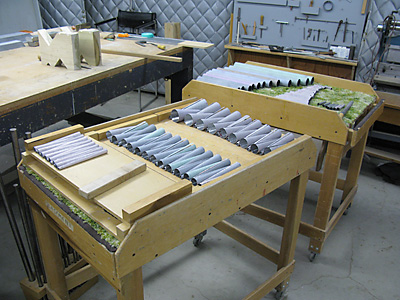
The feet for the Lieblich Gedeckt in the foreground.
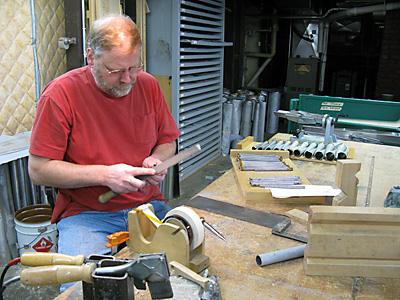
John prepares the Lieblich Gedeckt feet to be soldered to the bodies.
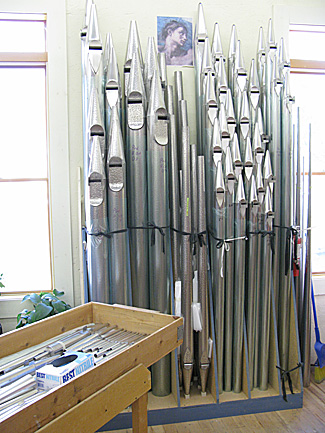
A variety of bass pipes, too long to fit in standard pipe trays for storage. They are placed upside down so that small pointed toes don’t collapse under the weight. You can see special little blocks under the non-inverted pipes in the center; these blocks support the pipe in a way that keeps the toe from being crushed, similar to countersunk toeholes on a windchest.
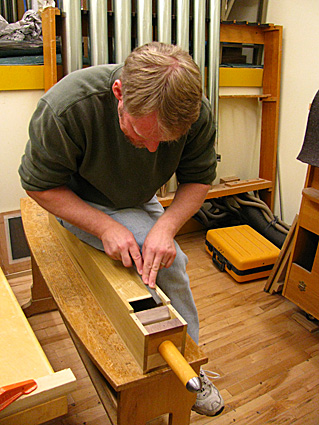
John Streufert files the upper lip of a wooden bass pipe, a part of the voicing process.
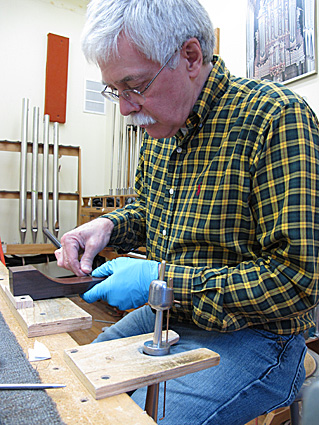
Bill curves a reed for the Swell Oboe.
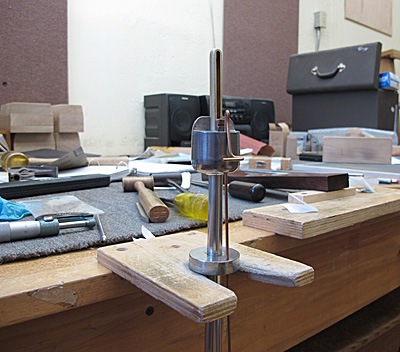
The Oboe is constructed in the French manner, with a ‘ring’ and a ‘nut’, here shown upside-down during the voicing process. This double-block construction better supports the slender tin resonators.
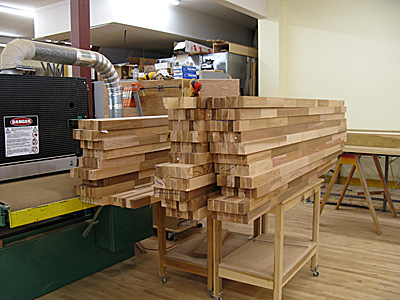
Blanks of western red cedar glued up for swell shades. The butcher block construction prevents warping, which would keep the shades from closing fully, decreasing the swell effect.
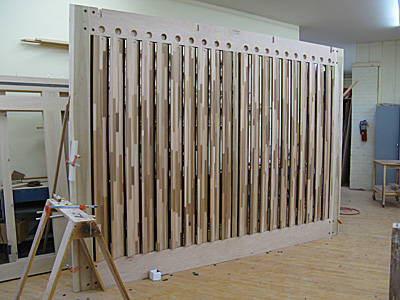
After each edge is given a special angled profile and the individual shades are cut to length, they are assembled in a frame. This is the shadefront for the Choir.
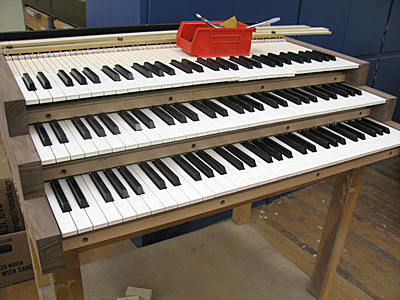
The manual keyboards have cow bone naturals and ebony sharps. The key cheeks are black walnut.
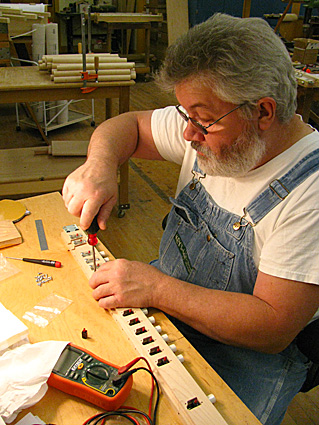
Art fits the thumb pistons to a rail that is mounted to the frame below the keys.

The thumb pistons have magnetic reed switches, which do not suffer from oxidation as exposed wire contacts do.
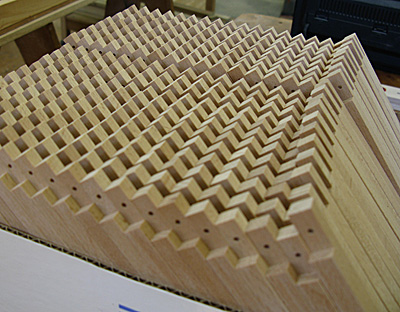
Some of the pedal coupler levers, which are made of white beech.

House-made wooden squares, mounted on beams and ready for installation in the console chassis.

The console chassis, the ‘guts’ of the organ console.
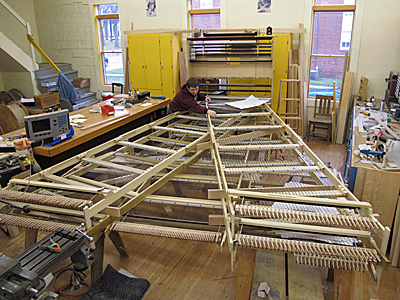
Pat Thieszen assembles the tracker runs, which guide the trackers under the floor from the console into the organ.
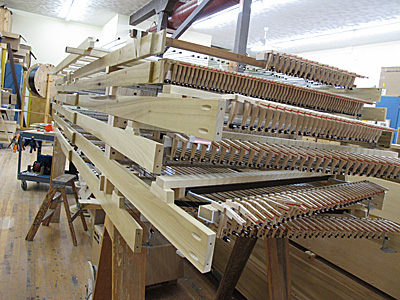
Having been assembled, the tracker runs are set aside for eventual assembly with the rest of the organ.

The trackers and stickers are made of carbon fiber rods.
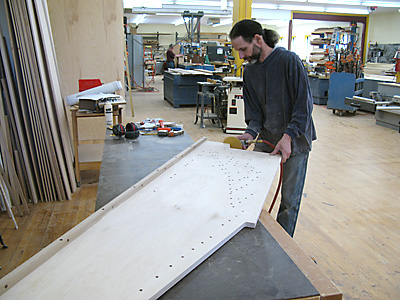
Sanding one of the rollerboards.
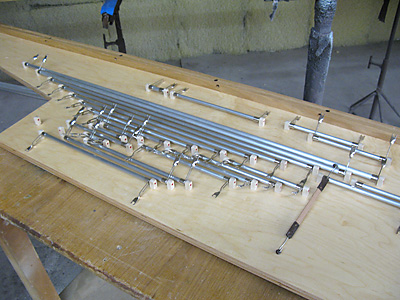
A completed rollerboard.

Wood ribs for the single-rise reservoirs have been cut, profiled and sanded.
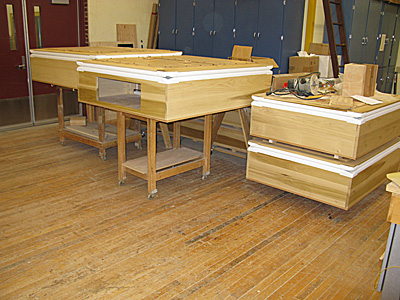
Four of the five completed reservoirs.
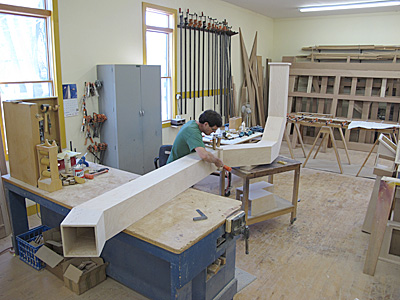
Randy making wooden wind trunks, the ducts that carry the pressurized air from the bellows to the windchests.

After being lacquered, these wind trunks are waiting to be installed in the organ.
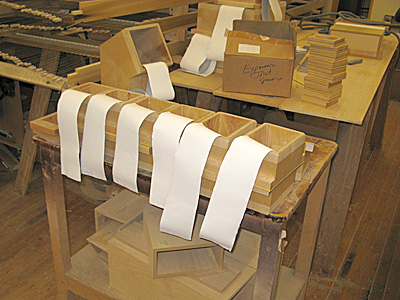
For ease of installation and to allow for movement between the major components of the organ, expansion joints are provided in all of the windlines. The joint itself is a gap in the wooden windline that is covered by leather. Here you can see six very short windlines and the leather strips that will be glued to them.
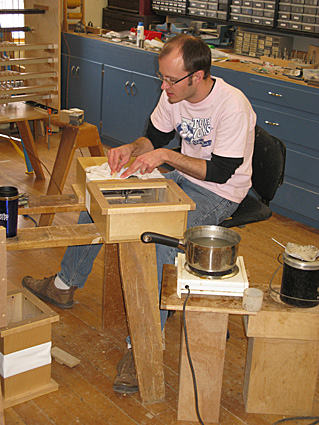
Donny is gluing leather on an expansion joint.
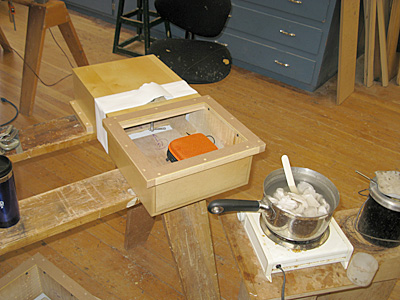
This short windline connects a large vertical wind trunk to the Swell C#-side slider windchest.
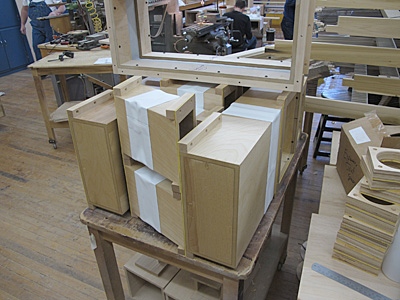
A collection of completed expansion joints.



 The University of Tampa
The University of Tampa






































